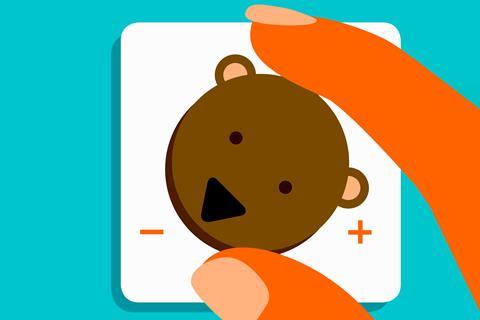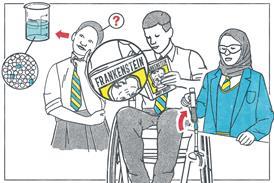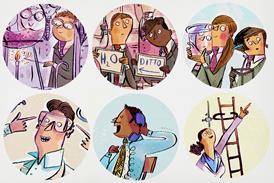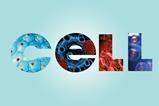How using metacognition can encourage better learning and better results

Educators use metacognition, often called thinking about thinking, to improve learning. In a 2024 study, researchers designed an intervention to improve undergraduate chemistry students’ ability to solve problems by greater use of metacognition.
Students vary in their capacity to solve problems, often because their views of their ability are affected by their previous experiences, especially of not being successful. Another cause of difficulty is overfocusing on getting the correct answer rather than understanding how to arrive at the correct answer. The researchers used two coordinated strategies to counter these difficulties.
Two-step approach to improve metacognition
Once the researchers had set the chemistry problem, the first strategy encouraged students to use a framework that explicitly supported their use of suitable problem-solving skills. This framework, known as Goldilocks Help, sets out a five-stage protocol which names a sequence of key processes required to solve problems:
- Understand
- Analyse
- Plan
- Implement
- Evaluate
Goldilocks Help scaffolds problem solving by providing the student with prompts while at the same time enhancing their conscious awareness of the thinking processes involved.
Once the researchers had set the chemistry problem, the first strategy encouraged students to use a framework that explicitly supported their use of suitable problem-solving skills. This framework, known as Goldilocks Help, sets out a five-stage protocol which names a sequence of key processes required to solve problems: understand, analyse, plan, implement and evaluate. This framework scaffolds problem solving by providing the student with prompts while at the same time enhancing their conscious awareness of the thinking processes involved.
The second strategy provided an expert solution to the problem set, which showed both the thinking processes and the expected answer. The researchers asked students to compare their answer to the one given in the expert solution and to write reflectively about the exercise. The team then used thematic analysis to identify two distinct groups of responses from 373 accounts by 178 students.
Teaching tips
- Use devices, such as frameworks, that encourage students to recognise the cognitive processes they are adopting to solve problems.
- Be aware that students who appear confident may not have the problem-solving skills they think they do.
- Provide written and spoken expert solutions that model plausible processes as well as correct answers.
- Give sufficient time for reflection so that students can think deeply about their performance.
- Consider the different factors (cognitive, emotional, behavioural) that contribute to full engagement in learning.
Teaching tips
- Use devices, such as frameworks, that encourage students to recognise the cognitive processes they are adopting to solve problems.
- Be aware that students who appear confident may not have the problem-solving skills they think they do.
- Provide written and spoken expert solutions that model plausible processes as well as correct answers.
- Give sufficient time for reflection so that students can think deeply about their performance.
- Consider the different factors (cognitive, emotional, behavioural) that contribute to full engagement in learning.
One group of responses showed a high level of engagement with the Goldilocks Help framework. Indicators of engagement clustered into three subthemes: cognitive, emotional and behavioural. The second group of responses showed similar indicators, but of disengagement.
Students benefited from the Goldilocks Help scaffold in combination with expert solutions, self-assessment and reflection
Researchers used the written responses to confirm earlier work which had identified four main types of student behaviour. The four types varied with respect to their use of the framework, their depth of reflection and their success in problem solving.
The findings suggest that students benefited from the continued and repeated use of the Goldilocks Help scaffold in combination with expert solutions, self-assessment and reflection. Analysis showed that these measures resulted in both enhanced problem-solving capacity and metacognition.
Greater student awareness
The researchers noted variability in students’ engagement with the interventions. Cognitive gains included that after the interventions, some students could identify flaws in their approaches, while those who initially lacked problem-solving skills learned to slow down and reflect more deeply.
However, some students resisted using the framework, fearing that it took too much time. Others worried using it would result in them getting a wrong answer. They believed their existing approach would enable them to get it right.
The findings suggest that reflective writing can help students recognise their own progress more clearly and can provide educators with data to help them target student support more effectively.
Jane Essex
Reference
K Vo et al, Chem. Educ. Res. Pract., 2025, 26, 141-157 (doi.org/10.1039/d4rp00096j)
Keep thinking about thinking
- Learn more about why you should actively teach metacognition.
- Read how metacognition helps with one of the hardest aspects of chemistry, the understanding of submicroscopic models.
- Discover three strategies to help you promote thinking about thinking in your classroom.
- Develop your learners’ metacognitive skills to aid their independent learning and boost outcomes.
References
K Vo et al, Chem. Educ. Res. Pract., 2025, 26, 141-157 (doi.org/10.1039/d4rp00096j)














No comments yet